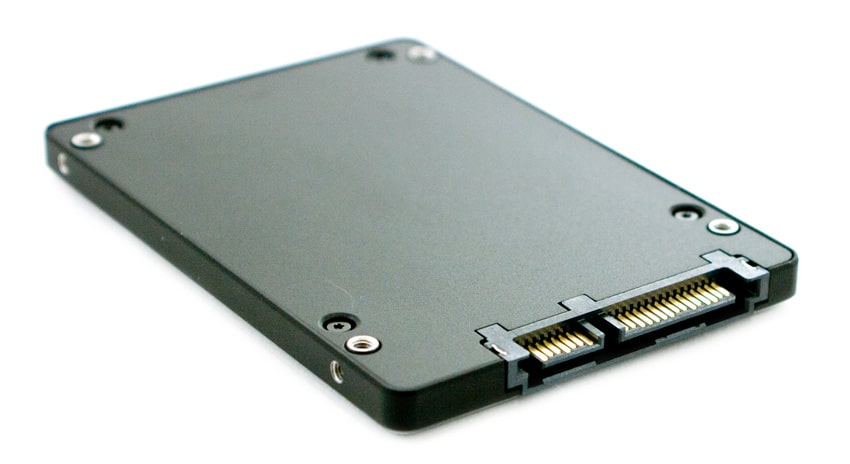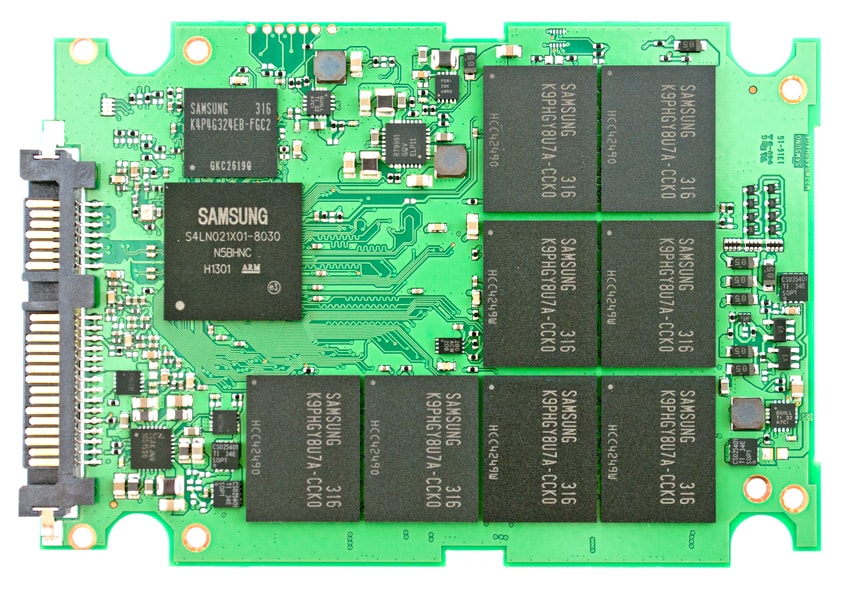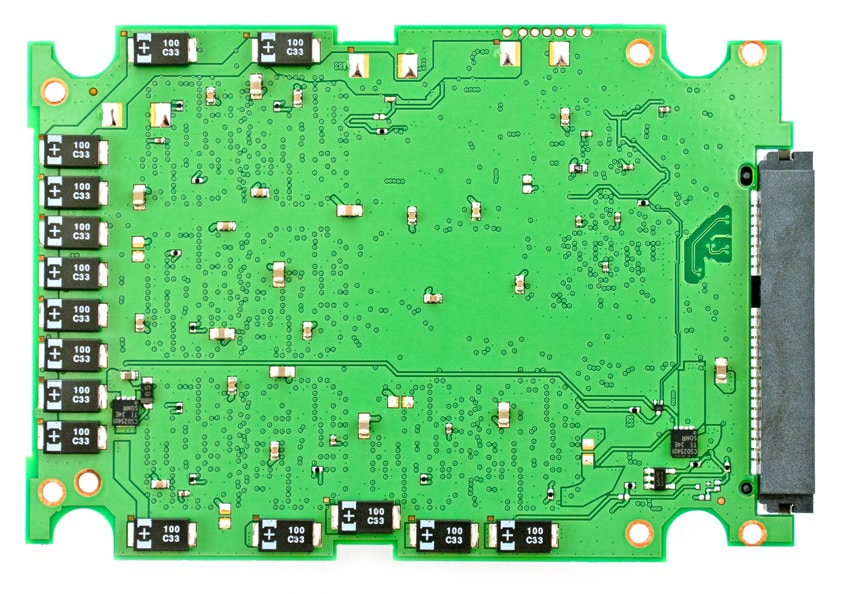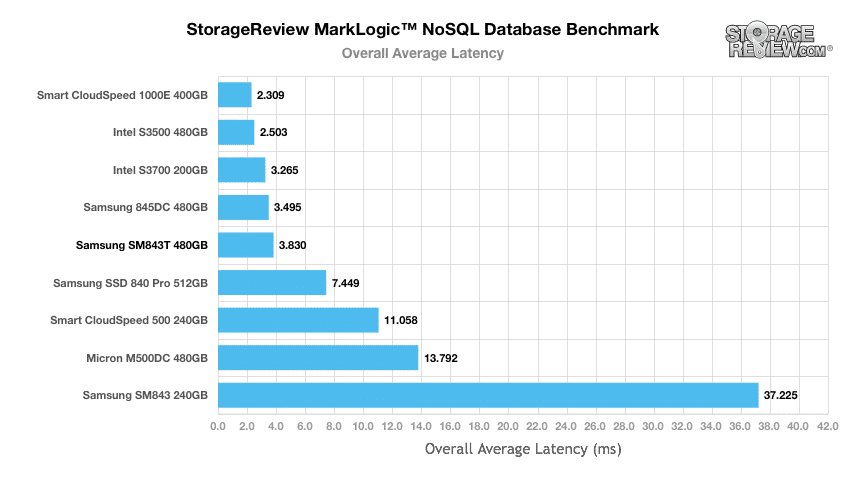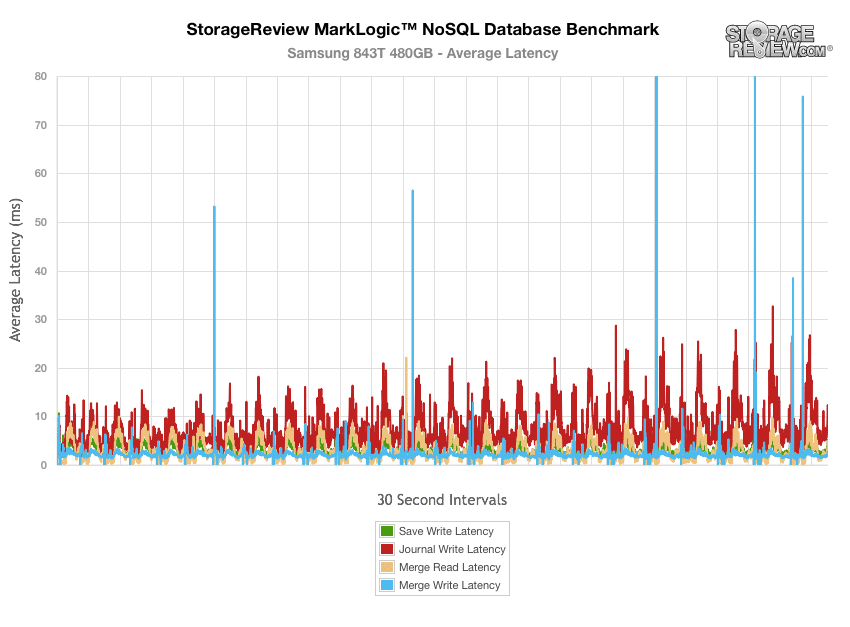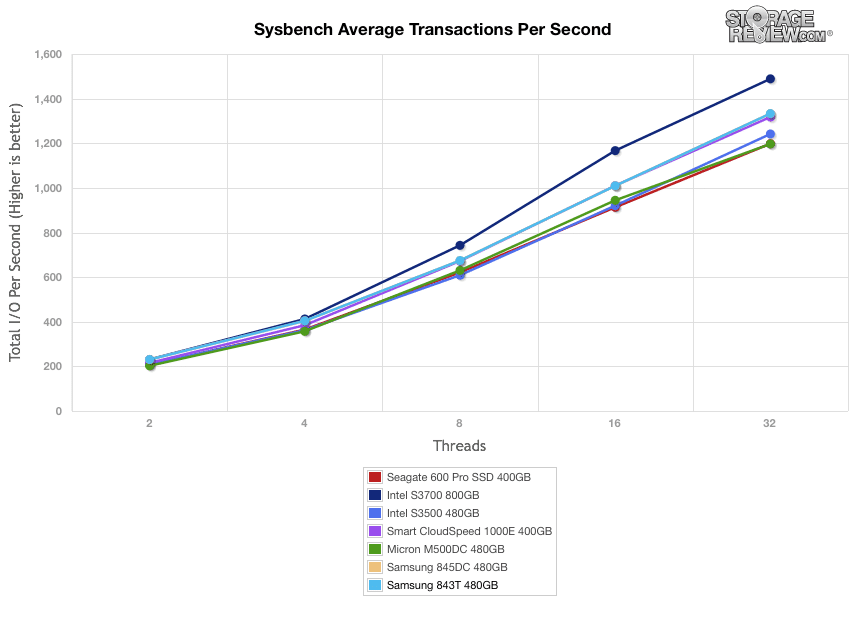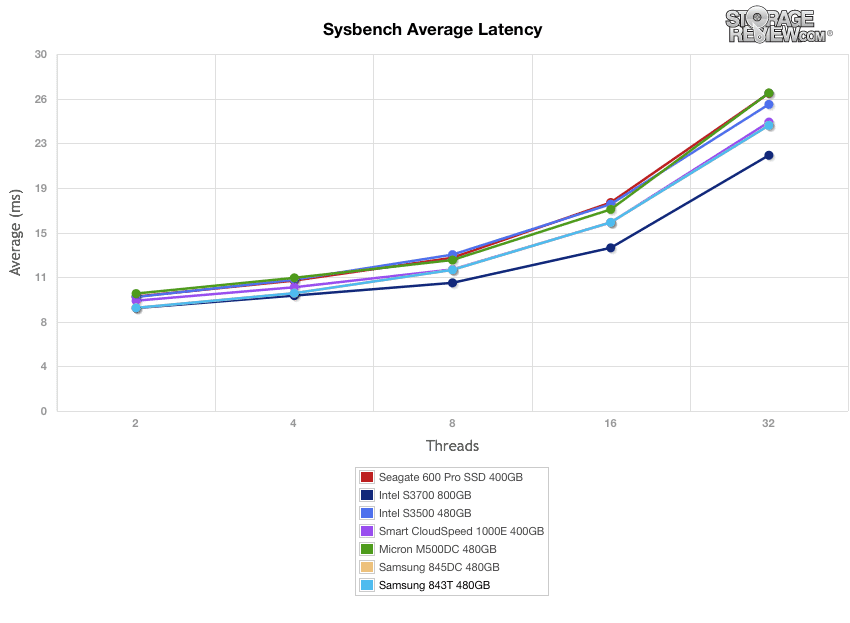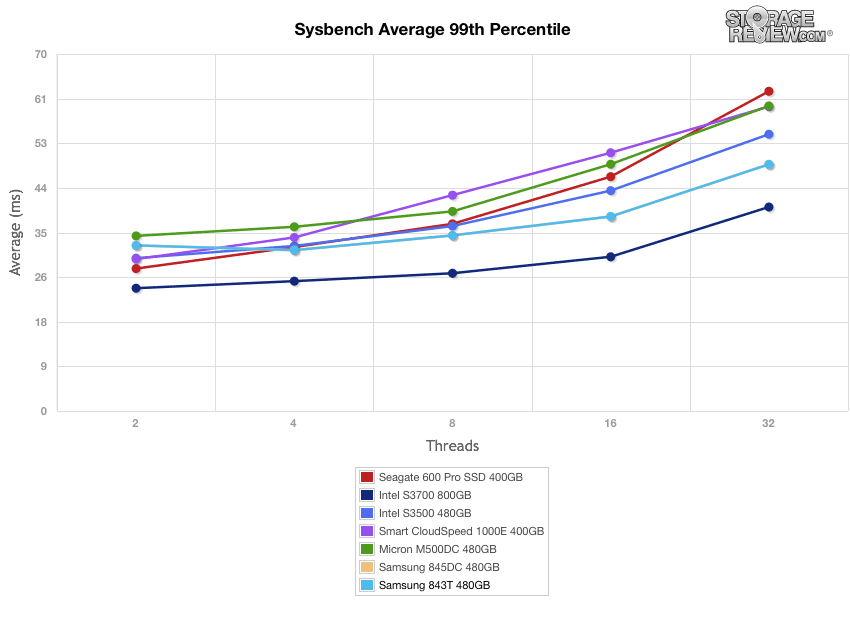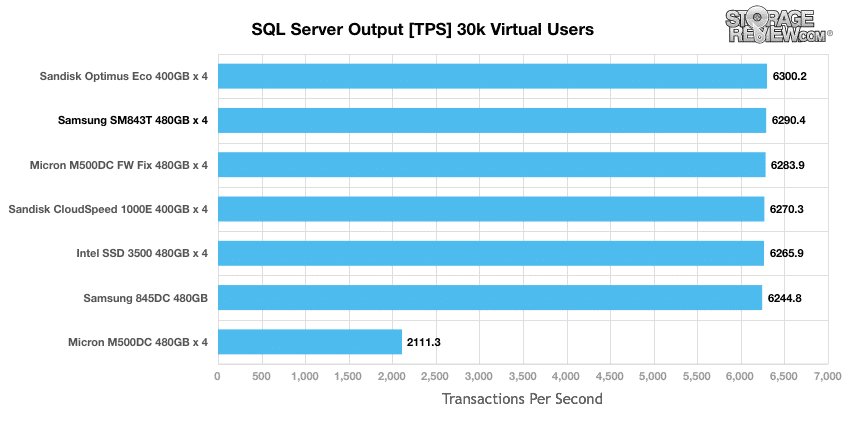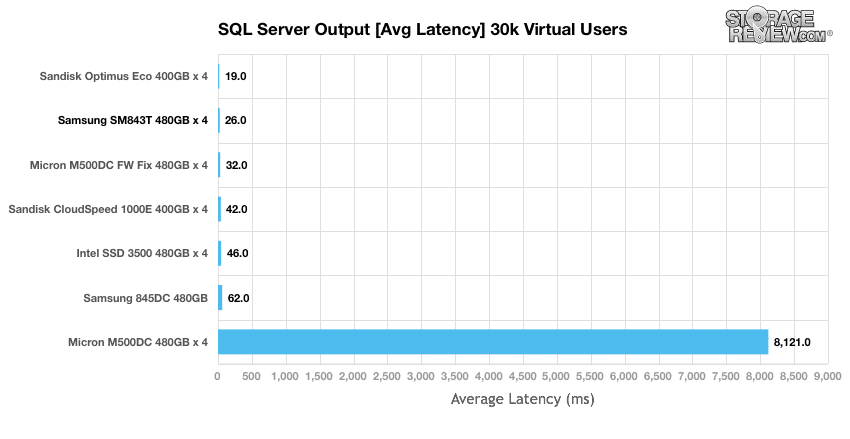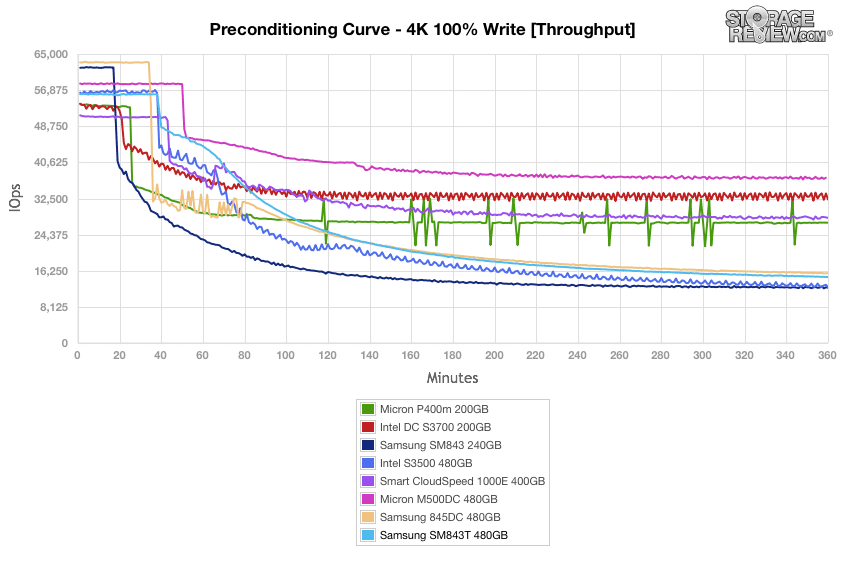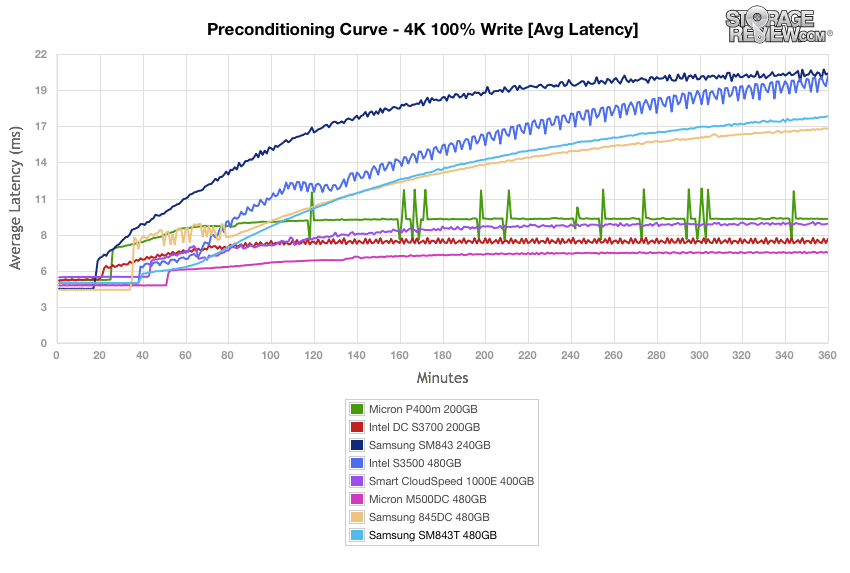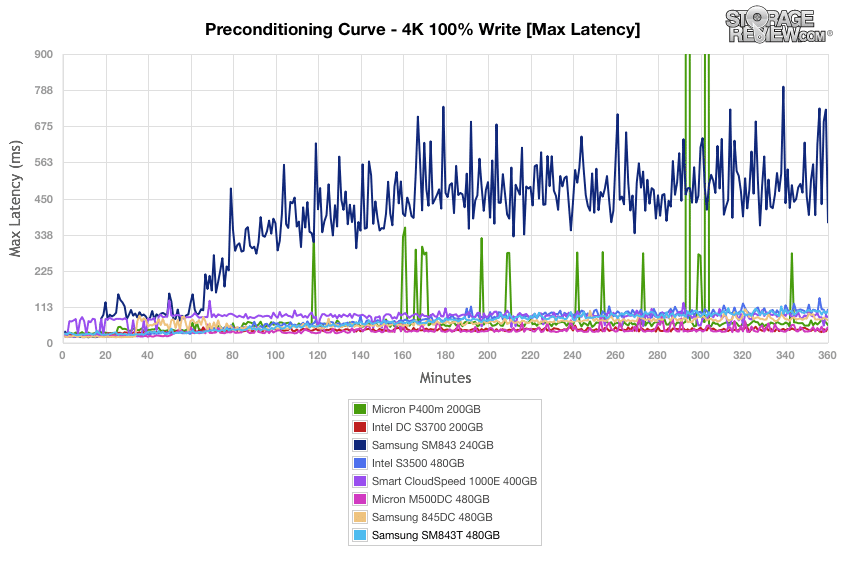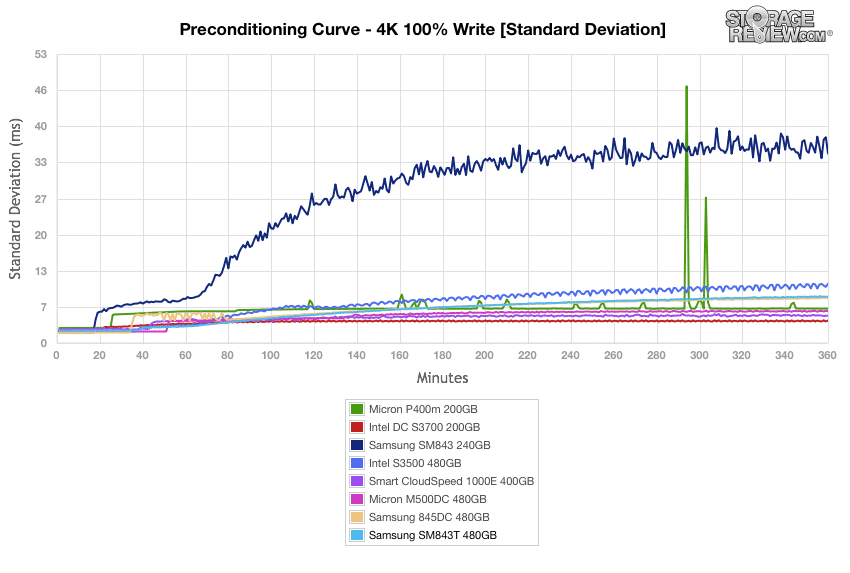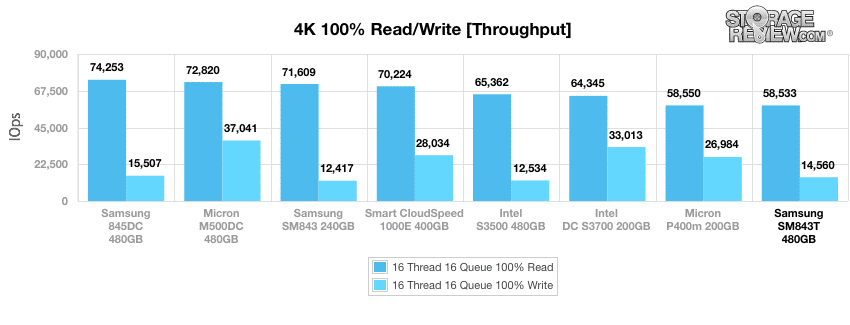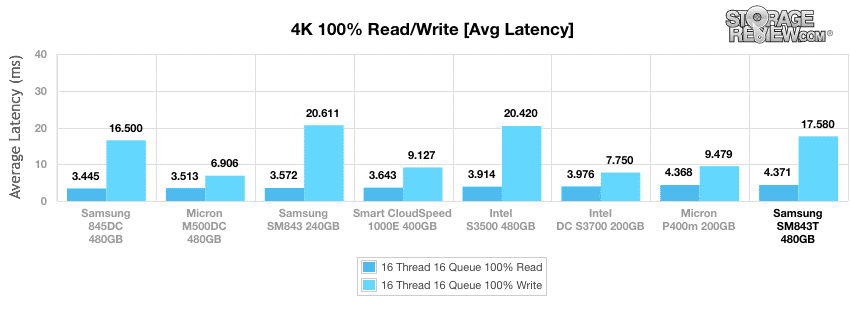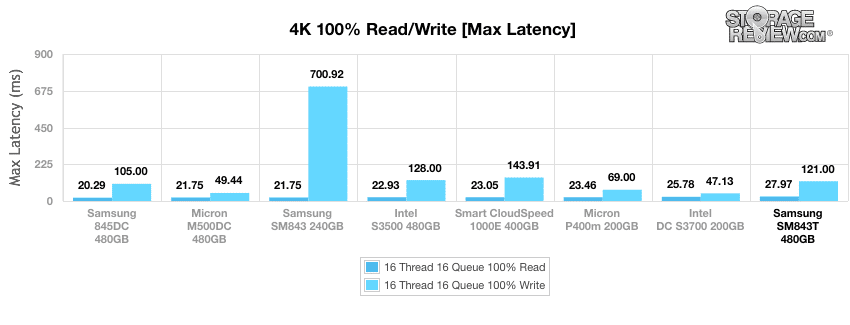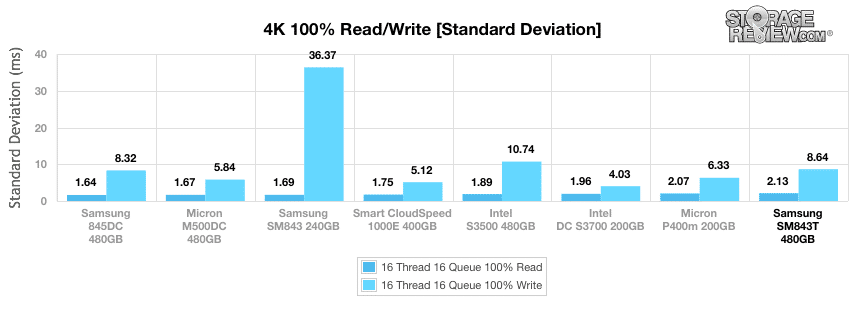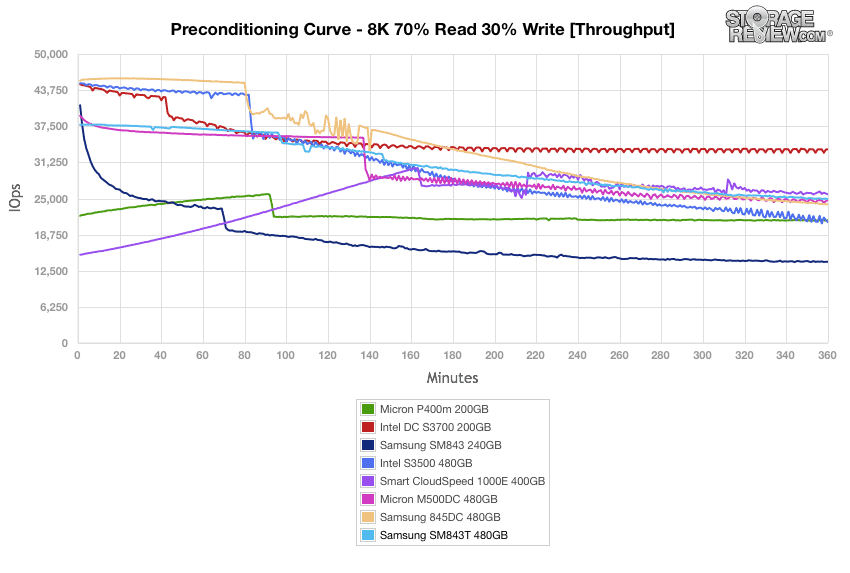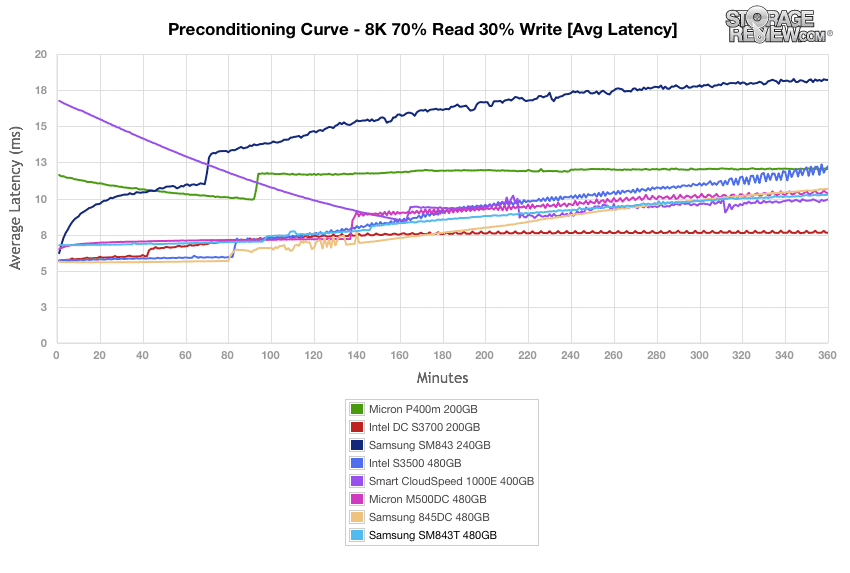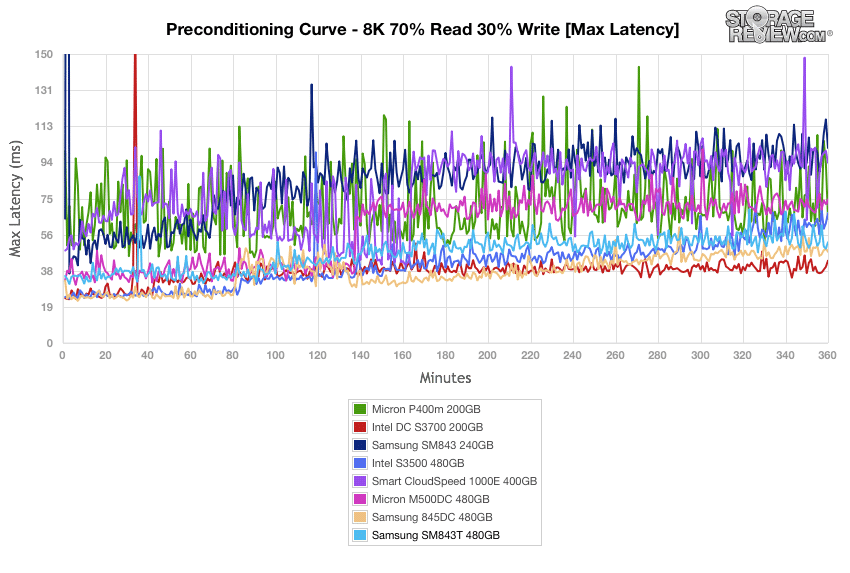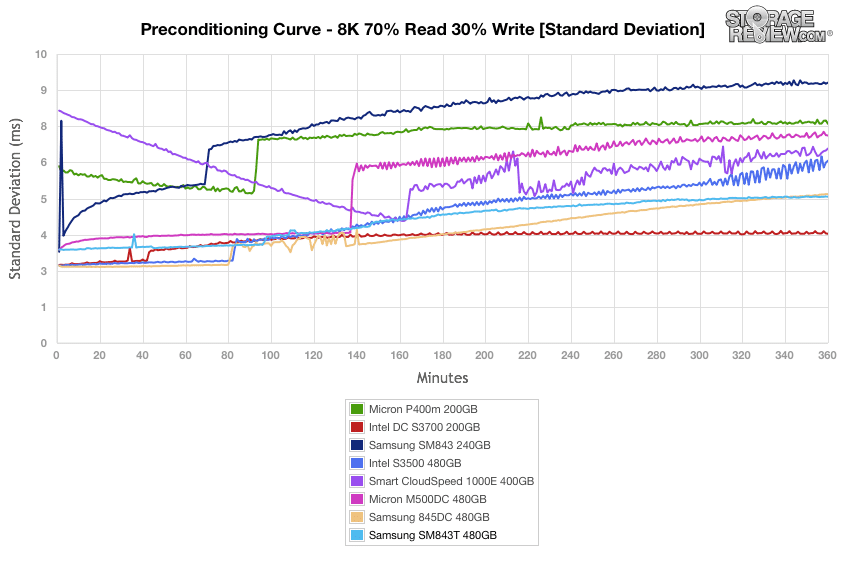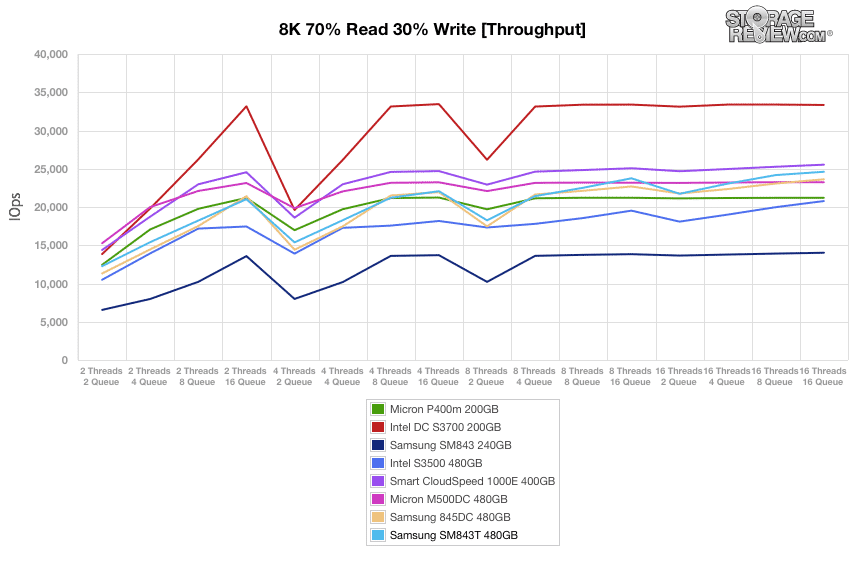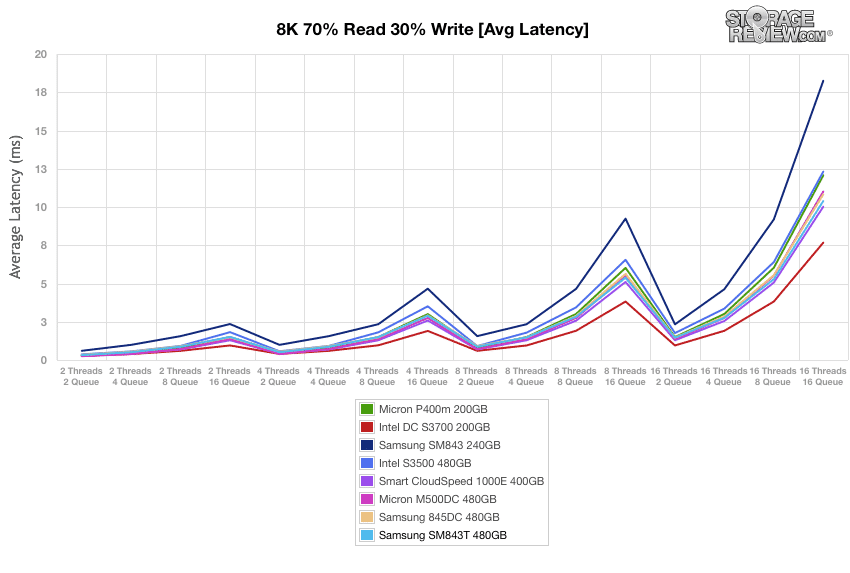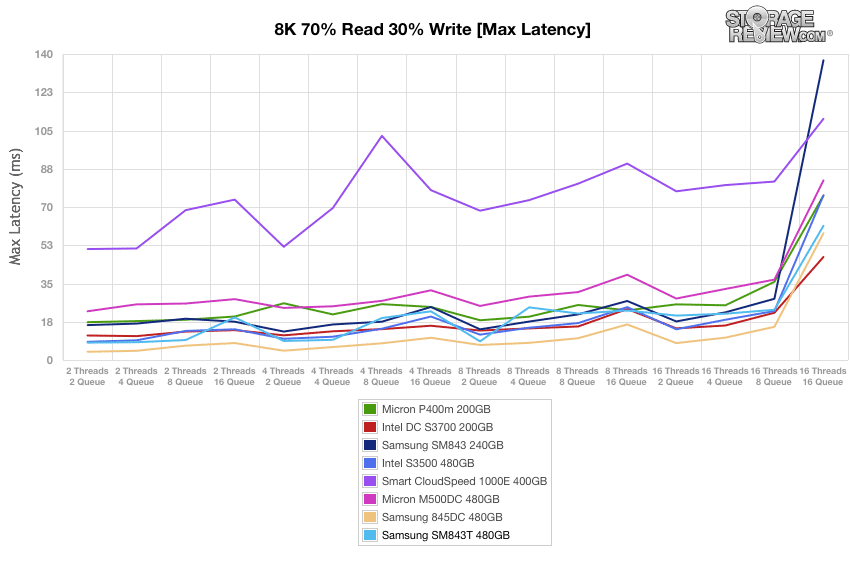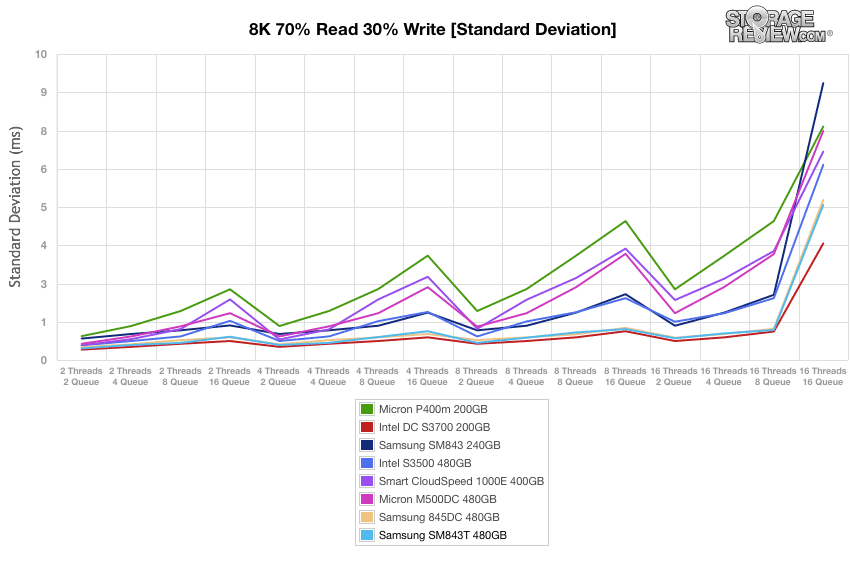
The Samsung SM843T is an enterprise-grade SSD that is designed to offer a consistent level of performance (99.9% reliable latency and QoS) over its lifespan, and is ideal for core enterprise use cases including Big Data systems, VDI and other high-performance enterprise platforms. The SM843T is a companion to the Samsung SM843 drive, which was originally reviewed approximately a year ago. Though both Samsung SSDs use the same MDX S4LN021X01-8030 Controller, the new SM843T is architected specifically for mixed data center use cases, while the SM843 is designed to be used in environments that require read-intensive behavior like server boot drives, higher-end enterprise client workstations and certain embedded applications. The other main difference between the two is that the SM843T uses enterprise NAND (eMLC), which focuses on prolonging the reliability of the drive, while the SM843 uses client MLC NAND.
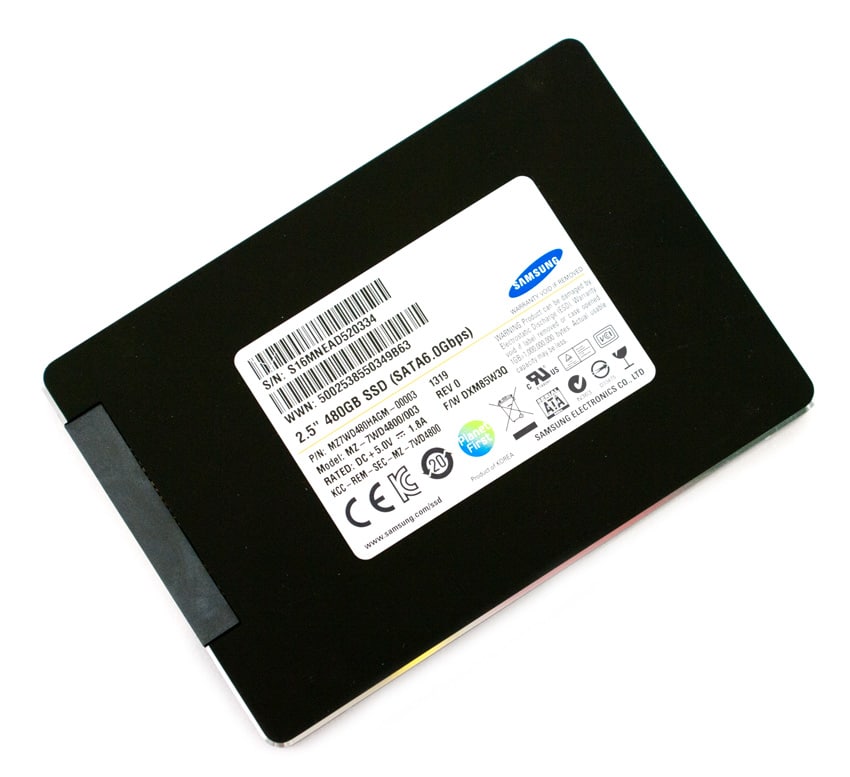
The SM843T is also designed for consistent low latency, high write endurance, and power-loss protection. Samsung also indicates that their SSD has the capability to boast a high-level of sustained random read and write workloads (98kIOPS/15kIOPS, respectively), all at a very affordable price tag. Additionally, the drive is optimized for sustained random read and write workloads up to 1,930TBW for the 480GB model and up to 3,680TBW for the 960GB model.
In what seems to be a growing trend among enterprise SSDs, all SM843T capacities are built with tantalum capacitors, which protect user data located in the write cache during unexpected power failures. This enterprise-grade power-loss protection provides an added level of security, ensuring that important write information is protected against data corruption that may be caused by power-loss.
The Samsung SM843T family of SSDs come in a range of capacities: 120GB, 240GB, 480GB, and 960GB. We will be looking at the 4x 480GB unit for this review.
Specifications
- Form Factor: 2.5in
- Capacity: 120/240/480/960GB
- Host Interface: Serial ATA 3 (6Gb/s)
- MTBF: 2,000,000 hours
- Uncorrectable Bit Error Rate (UBER): 1×1017
- Power Consumption (Active): 3.4W
- Power Consumption (Idle): 300mW
- Read Latency (99.9% QoS): 170µs
- Write Latency (99.9% QoS): <3ms
- Random Read: Up to 98,000IOPS
- Random Writes: Up to 15,000IOPS
- Random Terabytes Written (TBW): Up to 3,860TBW, Up to 2WPD
- Sequential Read: Up to 500MB/s
- Sequential Writes: Up to 370MB/s
- Sequential Terabytes Written (TBW): Up to 20,000TBW, Up to 11WPD
- Physical Dimensions: 100mm x 70mm x 7mm
- Weight: 56g
Design and build
Samsung continued to use its sleek and minimalistic design with the SM843T, using a charcoal color 2.5-inch, 7mm enclosure in a solid metal construction for a rugged composition. The Samsung logo and “Solid State Drive” text in white font are located on the front side of the device.
The SM843T’s form factor allows the SSD to support a variety of applications and use cases, from ultra-high density enterprise applications to demanding enterprise client applications such as notebooks and desktops. The back-side of the SM843T gives users a plethora of information, including the product information label (which displays relevant information such as the capacity and model number).
The SM843T can be easily mounted via its four screw holes located on the side profiles.
The SM843T’s storage derives from Samsung’s 20nm-class eMLC NAND Flash. Also visible is the SSD’s tantalum capacitors, which protects all data in the write cache in the case of an unexpected power failure.
Testing Background and Comparables
Comparables for this review:
- Micron P400m (400GB, Marvell 9187 controller, Micron 25nm MLC NAND, 6.0Gb/s SATA)
- Intel SSD DC S3700 (200GB, Intel PC29AS21CA0 controller, Intel 25nm MLC NAND, 6.0Gb/s SATA)
- Micron M500 (480GB, Marvell controller, Micron 20nm MLC NAND, 6.0Gb/s SATA)
- Samsung 845DC (480GB, MEX controller, Samsung 19nm Toggle 3bit NAND, 6.0Gb/s SATA)
- Samsung SM843 (240GB, Samsung MDX S4LN021X01-8030 Controller, 20nm Samsung MLC NAND, 6.0Gb/s SATA)
- Intel SSD DC S3500 (480GB, Intel PC29AS21CA0 controller, Intel 20nm MLC NAND, 6.0Gb/s SATA)
- Smart CloudSpeed 1000E (400GB, Marvell 88SS9187-BLD2 controller, Toshiba TH58TEG8DDJBA8C 19nm MLC NAND, 6.0Gb/s SATA)
All SAS/SATA enterprise SSDs are benchmarked on our second-generation enterprise testing platform based on a Lenovo ThinkServer RD630. This Linux and Windows-based testing platform includes the LSI 9207-8i HBA as well as I/O scheduling optimizations geared towards best-case flash performance. For synthetic benchmarks, we utilize FIO version 2.0.10 for Linux and version 2.0.12.2 for Windows. Application benchmarks use a variety of testing platform configurations and are detailed below.
- 2 x Intel Xeon E5-2620 (2.0GHz, 15MB Cache, 6-cores)
- Intel C602 Chipset
- Memory – 16GB (2 x 8GB) 1333Mhz DDR3 Registered RDIMMs
- Windows Server 2008 R2 SP1 64-bit and CentOS 6.3 64-Bit
- 100GB Micron RealSSD P400e Boot SSD
- LSI 9211-4i SAS/SATA 6.0Gb/s HBA (For boot SSDs)
- LSI 9207-8i SAS/SATA 6.0Gb/s HBA (For benchmarking SSDs or HDDs)
- Mellanox ConnectX-3 10GbE PCIe 3.0 Adapter
- Mellanox ConnectX-3 InfiniBand PCIe 3.0 Adapter
Application Workload Analysis
In order to understand the performance characteristics of enterprise storage devices, it is essential to model the infrastructure and the application workloads found in live production environments. Our first three benchmarks of the Samsung SM843T are therefore the MarkLogic NoSQL Database Storage Benchmark, MySQL OLTP performance via SysBench and Microsoft SQL Server OLTP performance with a simulated TCP-C workload.
Our MarkLogic NoSQL Database environment requires groups of four SSDs with a usable capacity of at least 200GB, since the NoSQL database requires roughly 650GB of space for its four database nodes. Our protocol uses an SCST host and presents each SSD in JBOD, with one allocated per database node. The test repeats itself over 24 intervals, requiring between 30-36 hours total. MarkLogic records total average latency as well as interval latency for each SSD.
In our overall average latency benchmark, the Samsung SM843T fared well against its competition, coming in towards the middle of the pack with an average latency of 3.83ms, just behind the other Samsung drive.
The latency results for the majority of the operations during the NoSQL benchmark show that the SM843T did experience a latency spike (although this is normal for SSDs).
Our next application test consists of Percona MySQL database test via SysBench, which measures the performance of OLTP activity. In this testing configuration, we use a group of Lenovo ThinkServer RD630s and load a database environment onto a single SATA, SAS or PCIe drive. This test measures average TPS (Transactions Per Second), average latency, as well as average 99th percentile latency over a range of 2 to 32 threads.
The Samsung SM843T’s average TPS ranked near the middle of the pack and the Intel S3700 showed the best performance by a large margin.
The rankings in the average latency benchmark were nearly identical with the Samsung SM843T continuing to perform near the middle ranking with the Intel S3700 leading the pack.
At the lowest overall 99th percentile latency, the Samsung SM843T again took third place with an average latency of 54.24ms by 32T. The Intel S3700 continued its dominance.
StorageReview’s Microsoft SQL Server OLTP testing protocol employs the current draft of the Transaction Processing Performance Council’s Benchmark C (TPC-C), an online transaction processing benchmark that simulates the activities found in complex application environments. The TPC-C benchmark comes closer than synthetic performance benchmarks to gauging the performance strengths and bottlenecks of storage infrastructure in database environments. Our SQL Server protocol uses a 685GB (3,000 scale) SQL Server database and measures the transactional performance and latency with a 30,000 VU Load.
In our SQL Server test, the Samsung SM843T came in 2nd place, though there was virtually no difference in results between comparables except for the poor performance of the Micron M500DC.
Looking at the overall average latency, the Samsung SM843T ranked a very impressive second place, with the Micron M500DC once again trailing well behind by a large margin.
Enterprise Synthetic Workload Analysis
Flash performance varies as the drive becomes conditioned to its workload, meaning that flash storage must be preconditioned before each of the fio synthetic benchmarks in order to ensure that the benchmarks are accurate. Each of the comparable drives are secure erased using the vendor's tools and preconditioned into steady-state with a heavy load of 16 threads and an outstanding queue of 16 per thread.
Preconditioning and Primary Steady-State Tests:
- Throughput (Read+Write IOPS Aggregate)
- Average Latency (Read+Write Latency Averaged Together)
- Max Latency (Peak Read or Write Latency)
- Latency Standard Deviation (Read+Write Standard Deviation Averaged Together)
Once preconditioning is complete, each device is then tested in intervals across multiple thread/queue depth profiles to show performance under light and heavy usage. Our synthetic workload analysis for the Samsung 840 Pro uses two profiles which are widely used in manufacturer specifications and benchmarks.
- 4k
- 100% Read and 100% Write
- 8k
- 70% Read/30% Write
During preconditioning for the 4k synthetic benchmark, the Samsung SM843T performed relatively well at burst stage of our charts; however, after leveling off it ended up being one of the slower drives. The Micron M500DC boasted the best performance through its steady-state.
The Samsung SM843T showed good results during the burst stage of our average latency tests, though it showed an increase in latency starting near the 40-minute mark and ended up being one of the slower drives. The Intel DC S3700 and Micron M500DC were the second fastest and fastest drives, respectively.
In our maximum latency benchmark, the Samsung SM843T showed a very consistent rate with no noticeable spikes.
The Samsung SM843T continued its good performance in our standard deviation benchmarks, with only a gradual gain in latency and showing no spikes whatsoever. The Intel DC S3700 and CloudSpeed drives were the most consistent.
When looking at 4K throughput, the Samsung SM843T showed the lowest scores in read activity and the third lowest in the write column with 58,533IOPS and 14,560IOPS, respectively. Its brethren, the Samsung 845DC, boasted the top read performance.
The Samsung SM843T also was ranked at the bottom of the pack in average read and write latency with 4.371ms and 17.58ms, respectively.
Samsung’s SM843T continued to sit at the bottom of the pack in the max latency tests, though the SM843 posted the slowest write latency speed by a significant margin.
Though the SM843T continued its last place performance (2.13ms read and 8.64ms write), the difference between first and last place is subtle.
Our next workload uses 8k transfers with a ratio of 70% read operations and 30% write operations. The SM843T started out in the middle of the pack for its burst-rate, and ended up coming in third place by the end, just above the Smart CloudSpeed.
The Samsung SM843T consistently stayed near the upper part of the pack during the average latency testing. The Intel DC S3700 was the fastest in this benchmark.
The Samsung SM843T continued to show its great latency performance during the maximum latency test showing no major spikes and taking the third spot overall.
During the standard deviation tests, the SM843T continued to perform well with no noticeable spikes, falling just behind the consistency of the Intel DC S3700. The Crucial M500, Micron P400m, and Smart CloudSpeed all showed huge spikes during the test.
Once the drives are preconditioned, the 8k 70/30 throughput benchmark varies workload intensity from 2 threads and 2 queue up to 16 threads and 16 queue. The Samsung SM843T performed fairly well during this benchmark, coming in third place by the 16T/16Q with 24,606IOPS, just behind the Smart CloudSpeed. The Intel DC S3700 was the highest performer by a significant margin boasting an impressive 33,337IOPS.
The Samsung SM843T was an upper middle performer in average latency measurement, while the Intel DC S3700 was the fastest.
Results were very similar in the maximum latency test; the Samsung SM843T ranked third place again and the Intel DC S3700 was the fastest.
Looking at our standard deviation benchmark, the Samsung SM843T once again performed well, virtually mirroring the performance of the Samsung 845DC.
Conclusion
The Samsung SM843T SSD is designed specifically for Data Centers working with Big Data, VDI and other high-performance enterprise platforms. Samsung claims that the SM843T, which is equipped with enterprise 20nm-class MLC NAND flash, offers a consistent level of performance (99.9% reliable latency and QoS) over the course of its lifespan. After putting it through our gauntlet of tests, this claim by Samsung definitely holds true and is a significant improvement over its predecessor, the PM830.
When looking into its performance in further detail, the Samsung SM843T posted great results in most of our application and synthetic benchmarks. During our synthetic tests, the Samsung SM843T was a middle-to-top performer in our Percona MySQL database tests (which measures the performance of OLTP activity). Our SQL Server test showed that the SM843T had no trouble keeping up with the high-performance SSDs, while the results of the Sysbench MySQL test told a similar story.
In our 4k 100% read and 100% write benchmarks, the SM843T posted numbers that ranked at the bottom of the pack; however, the performance discrepancy between the top drive and the Samsung drive was very small in relative terms. In our 8k 70/30 workload and preconditioning tests, the Samsung drive showed some pretty impressive results, boasting numbers near the top of the leaderboard in each of our tests. We were particularly impressed with its consistency during our latency readings, as we barely saw any spikes when other top-performing enterprise SSDs showed numerous ones.
Coupled with its built-in tantalum capacitors to protect user data from file corruption caused by sudden power-loss as well as its focus on sustained random read and write workloads, the Samsung SM843T line of SSDs are a perfect fit for enterprises with mixed workload profiles.
Pros
- Great overall performance
- Impressive sustained workloads and latency
- Vertically integrated solution
Cons
- 4k synthetic benchmark results were a bit of a let down
Bottom Line
The Samsung SM843T SSD does exactly what it is designed to do by offering great consistency, sustained performance, and latency as well as reliable data protection with its built-in tantalum capacitors.
Learn More About Samsung Enterprise SSDs

